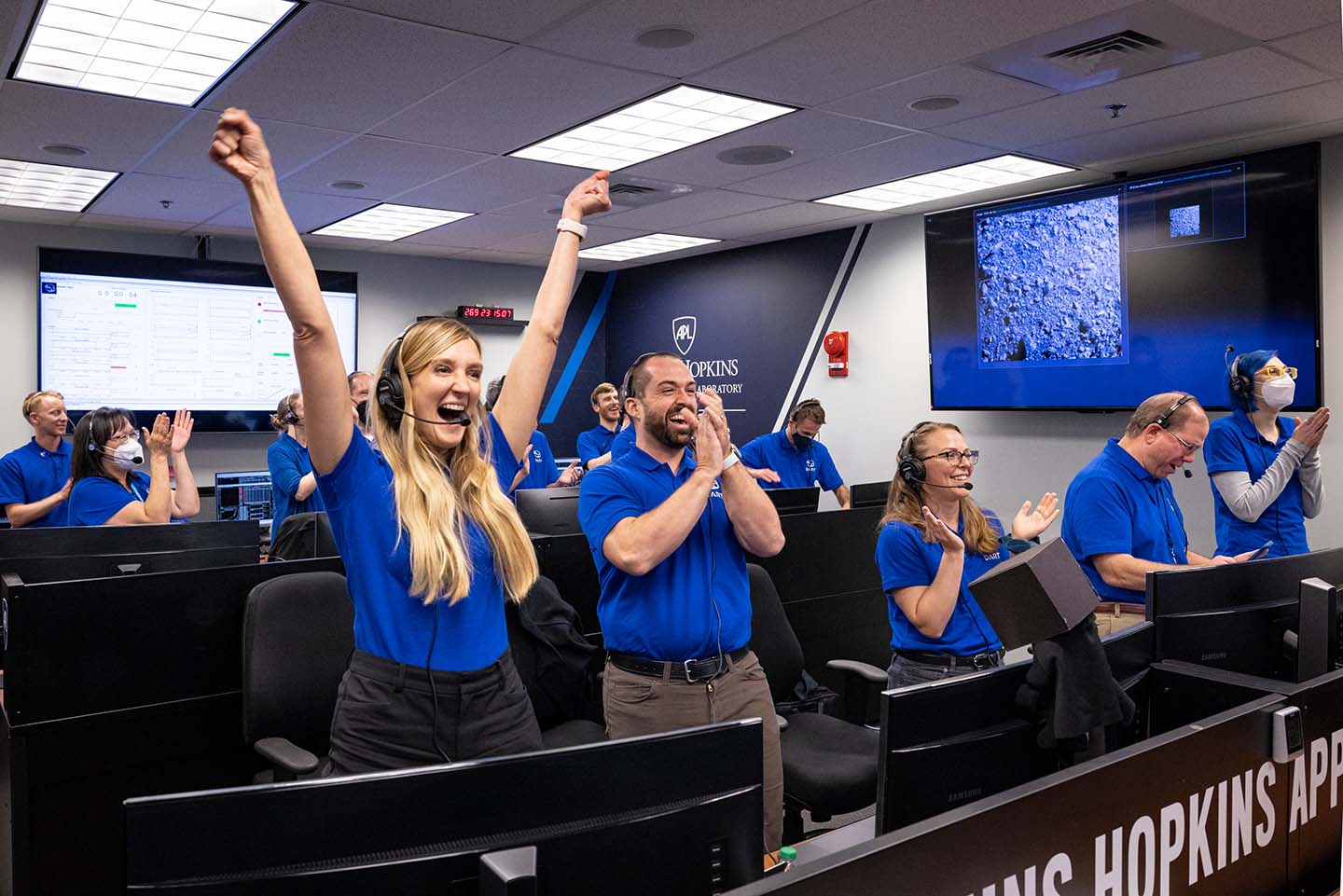News
Seven Asteroids Are Named for DART Team Members
Seven Johns Hopkins Applied Physics Laboratory (APL) scientists and engineers who made NASA’s Double Asteroid Redirection Test (DART) mission a smashing success last year are being honored with the very objects they aimed to defend Earth against: asteroids.
A June 2023 bulletin of the WG Small Bodies Nomenclature (WGSBN) working group — the 15-person assembly within the International Astronomical Union (IAU) charged with assigning names to comets and asteroids — announced that several DART team members will have an asteroid named after them.
On Sept. 26, 2022, NASA’s DART mission, which was designed, built and operated by APL, successfully deflected an asteroid during an on-orbit demonstration, proving a kinetic impactor is a viable approach for a future planetary defense mission. With a budget of $325 million, DART was the lowest-cost NASA planetary science mission in decades.
Those receiving asteroid appellations include DART mission systems engineer Elena Adams, the late DART mission operations manager Ray Harvey, DART project manager Ed Reynolds, DART deputy project manager Caitlin Shearer, and DART co-investigators Mallory DeCoster, Dawn Graninger and Emma Rainey.
Naming the Asteroids
Andy Rivkin, one of the DART investigation team leads, led the effort to submit new asteroid names for consideration, with support from other staff members in APL’s Space Exploration Sector.
The IAU has several rules for naming asteroids, including a requirement that the name be 16 characters or less, pronounceable in some language, inoffensive and not too similar to any existing names of such bodies. But beyond that, the naming process can get a little messy.
“There is no single, unified approach to giving names to asteroids, at least in the initial stages,” Rivkin said. “At its most basic level, it involves identifying an unnamed asteroid, proposing a name and providing a citation to the IAU, and then having the relevant committee approve it.”
The discoverer of an asteroid has the right to name it. For example, the asteroid Didymos, whose moon Dimorphos was the target of the DART mission, was named by the discoverer Joe Montani after he spotted it in 1996 while at the University of Arizona.
If the discoverer doesn’t name the asteroid within 10 years, however, anyone can name it.
“Since it’s a pretty small community and there are only a small number of asteroid discoverers these days, naming is almost always still done in coordination with the discoverer,” Rivkin said.
The naming of Dimorphos came close to falling into this category. The discoverers first detected the asteroid in 2003 but held off on naming it until DART team members encouraged them to give it a separate designation from Didymos. In 2020, they went with the suggestion of DART team member Kleomenis Tsiganis, giving the asteroid its current name.
“Dimorphos, which means ‘two forms,’ reflects the status of this object as the first celestial body to have the ‘form’ of its orbit significantly changed by humanity — in this case, by the DART impact,” Tsiganis said.

